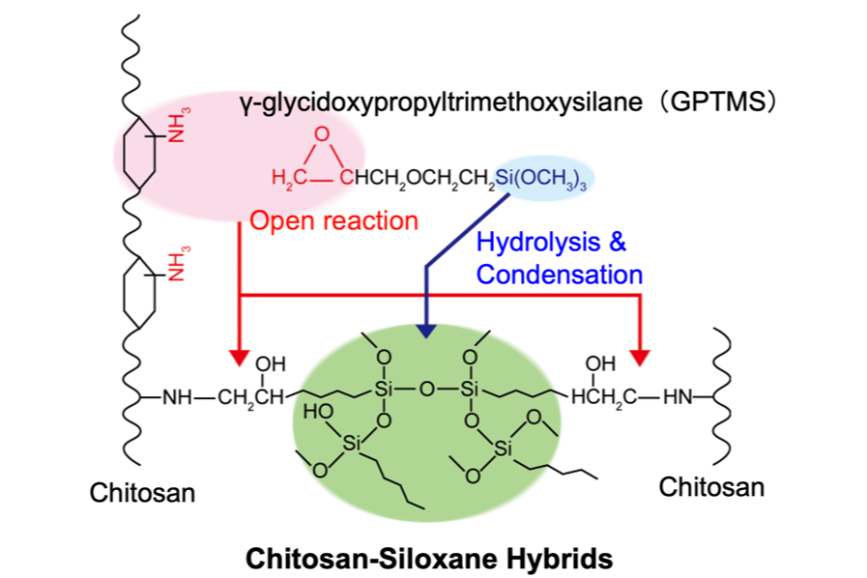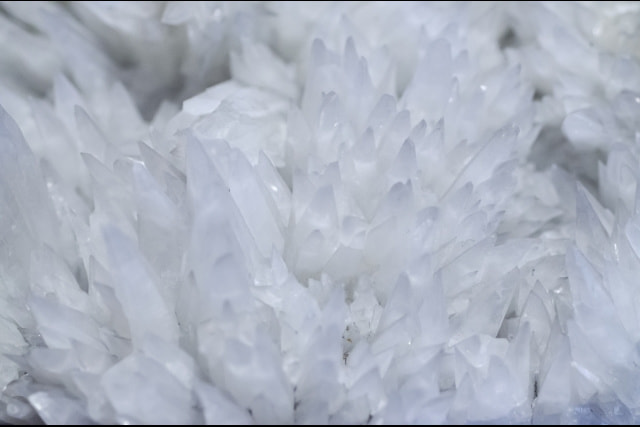Topics
2025

Chitosan−Siloxane Hybrids
A new scaffold material for tissue regeneration are prepared by modifying the biopolymer chitosan with inorganic molecules.
Chitin and chitosan are biodegradable polymers that can be extracted from crustaceans such as shrimp and crabs. They contain active amino groups (-NH3) in their molecules, which can be modified to create new molecules through various chemical reactions. We focused on inorganic, especially siloxane structures, and modified them at the molecular level to the chitosan skeleton to synthesize organic-inorganic composites with new functions. The sol-gel method was used to prepare these composites, and by changing the drying conditions, they can be molded into transparent and flexible thin films, sponge-like porous bodies, clay-like pastes, and so on.

Film
Wound dressing
The flexible membranes were prepared. The osteoblast and fibroblast cells proliferated and on the membranes.

Porous Scaffold
Scaffold
Interconnected pores were induced in the hybrids by freeze-drying system. The cells migrated into the pores well.

Capsule
Drug/Cell carrier
The capsules are prepared using the electrostatic charge of chitosan, and improved the strength of the capsules by coating or cross-linking. To apply the capsules as a sustained drug release carrier, the loading drugs and cells are investigating.

Hydrogel
Injectable
The sols become hydrogels at pH7.4 and 36.5°C. The hydrogels show clay like texture by mixed with ceramic particles.

Fiber
Ligament
The chitosan-hydroxyapatite or siloxane units mono-fibers were prepared by coagulation method and improved the mechanical strength.

Tube
Nerve
The peripheral nerves were regenerate, in particular myelin thickness and the nociceptive function were recovered.

Microsphere
DDS
The micro-particles were prepared by microfluidic systems and the degradation was controlled for drug delivery vehicles.

Thin film
Adhessiveness
The thin films are prepared from nanofibers that will not feel strange when applied to the surface of a living body.

Basic Science
Silicon has long been known to be an essential trace element for the formation of the skeleton in mammals. It has also been reported that materials with silicate ions and siloxane skeletons eluted from bioglass promote bone formation. In our laboratory, we use organic-inorganic composites to discover the relationship between the structure around silicon and various cell responses, and use this knowledge in the design of new materials.
